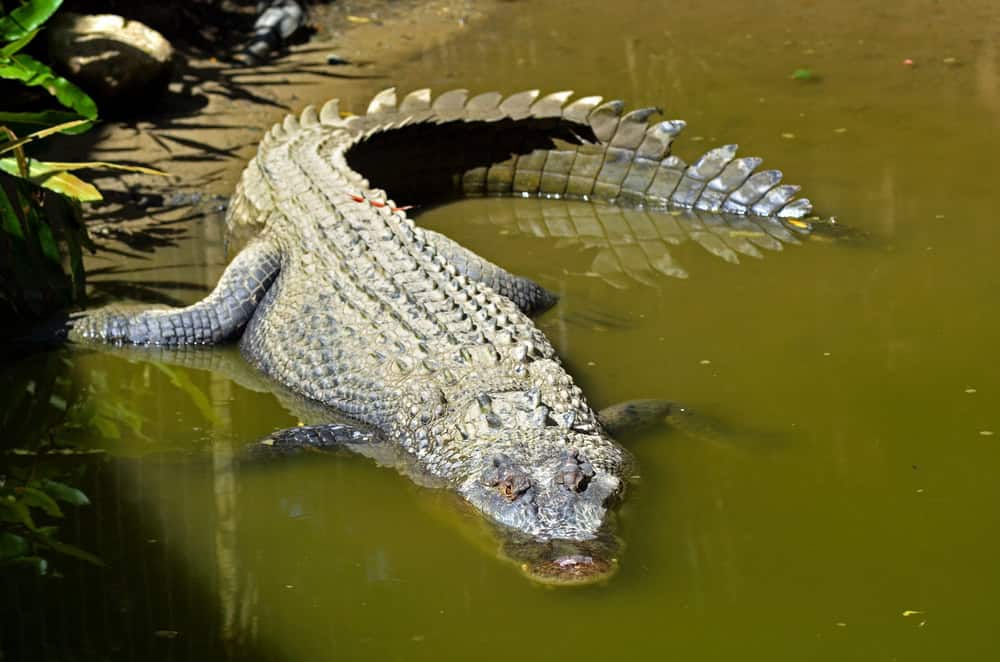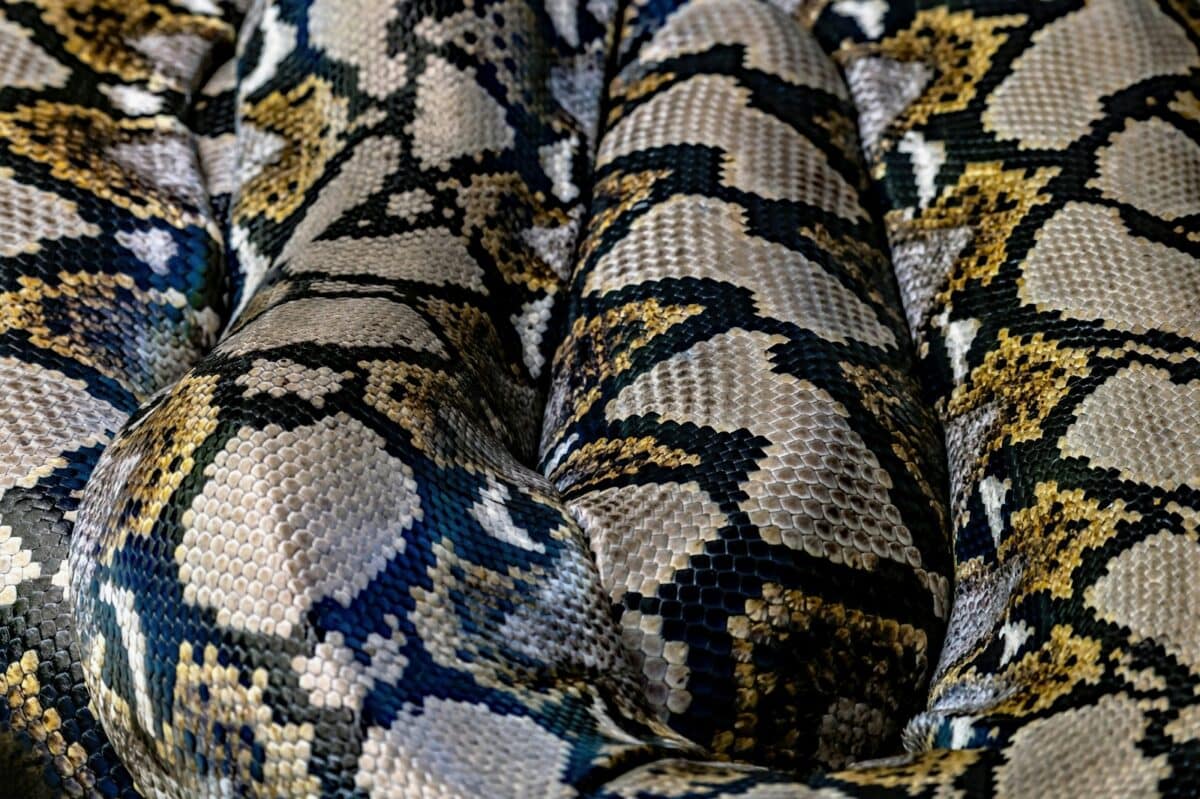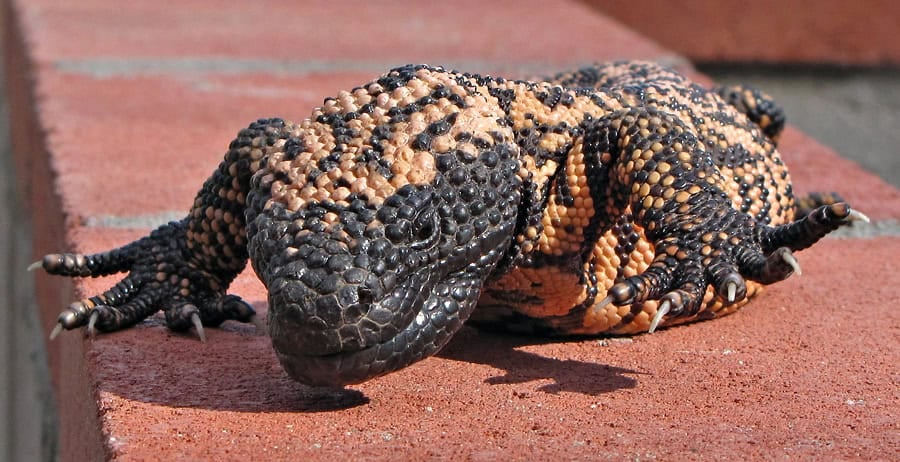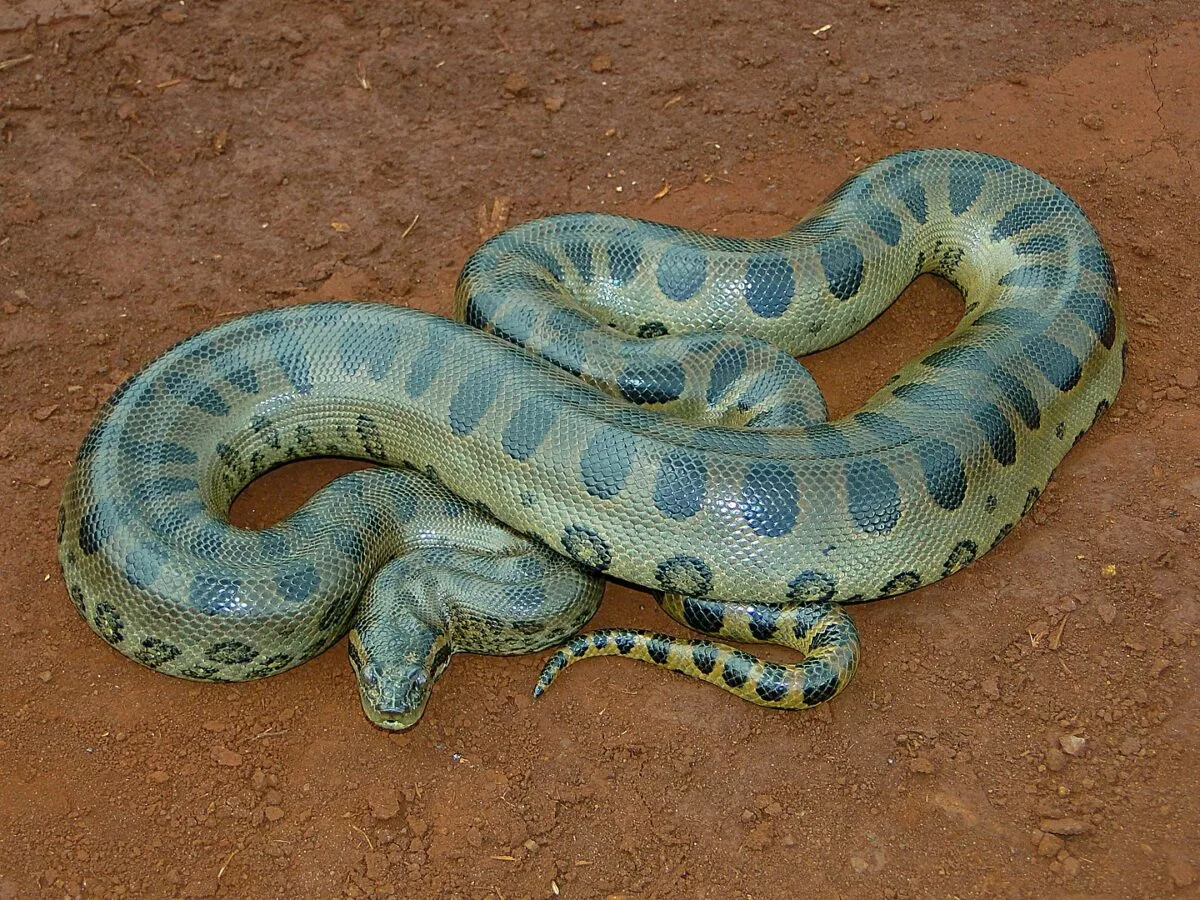In the vast tapestry of life on Earth, cold-blooded creatures represent some of the most fascinating and successful evolutionary stories. Unlike mammals and birds that maintain constant internal temperatures, these ectothermic animals rely on external heat sources to regulate their body temperature. Far from being a disadvantage, this energy-efficient approach has allowed them to dominate numerous ecosystems for millions of years. From the depths of ancient oceans to the heart of scorching deserts, cold-blooded creatures have adapted to rule their respective domains with remarkable efficiency. This article explores fourteen of the most impressive cold-blooded ecosystem dominators, examining how they’ve secured their positions at the top of their food chains and shaped the environments around them.
Saltwater Crocodile The Ultimate Aquatic Ambush Predator

The saltwater crocodile (Crocodylus porosus) stands as nature’s perfect predator, having remained virtually unchanged for over 200 million years. As the largest living reptile, males can reach extraordinary lengths of 20 feet and weigh more than 2,000 pounds. These massive predators rule the coastal waters, rivers, and wetlands across Northern Australia, Eastern India, and Southeast Asia with unrivaled authority. Their success lies in patient hunting techniques—they can remain motionless for hours before executing lightning-fast strikes, generating bite forces exceeding 3,700 pounds per square inch (over twice that of a great white shark). Saltwater crocodiles have shaped their ecosystems by controlling populations of large vertebrates and creating microhabitats through their nest-building activities and channel digging behaviors. Their metabolic efficiency is astounding; they can survive up to three years between significant meals, converting nearly 70% of consumed energy into body mass compared to just 2% for most mammals.
Komodo Dragon Indonesia’s Island Sovereign

The Komodo dragon (Varanus komodoensis) reigns as the world’s largest lizard and apex predator across its limited range in Indonesia’s Lesser Sunda Islands. Growing up to 10 feet long and weighing over 300 pounds, these formidable reptiles possess a dual-threat hunting system that has secured their dominance. Their hunting strategy combines powerful jaws exerting 39 newtons of bite force with bacteria-laden saliva and newly-discovered venom glands that deliver a potent toxin causing rapid blood pressure drops and preventing clotting in their prey. Komodo dragons shape their island ecosystems by controlling populations of deer, pigs, and smaller animals. Their ecological influence extends beyond predation—they create nutrient hotspots around carcasses and maintain open areas through regular movement patterns. With a remarkable ability to consume up to 80% of their body weight in a single meal and their exceptional metabolism allowing them to survive months between feedings, these dragons have truly mastered their insular domain for over four million years.
Green Anaconda South America’s Aquatic Constrictor

The green anaconda (Eunectes murinus) dominates the Amazon and Orinoco basins as South America’s aquatic constrictor supreme. As the world’s heaviest snake—reaching lengths of over 20 feet and weights exceeding 500 pounds—these massive serpents have perfected the art of ambush hunting in their wetland habitats. Their ecological dominance stems from a perfect combination of adaptations: excellent swimming abilities, incredible strength, and remarkable stealth. Green anacondas can remain submerged for up to 10 minutes, with only their eyes and nostrils breaking the water’s surface as they wait for prey. Their hunting strategy relies on constriction, capable of exerting pressures up to 90 pounds per square inch, forcing prey animals’ hearts to stop within minutes. These apex predators shape their ecosystems by regulating populations of capybaras, caimans, and other large vertebrates. Female anacondas, significantly larger than males, further influence their habitat through reproductive behaviors—they can give birth to 20-40 live young in a single brood, creating pulse effects in prey populations. Operating with remarkable energy efficiency, green anacondas may go months between meals, demonstrating the cold-blooded advantage in tropical ecosystems.
American Alligator Keystone Species of Southeastern Wetlands

The American alligator (Alligator mississippiensis) functions as a true ecosystem engineer across the southeastern United States, transforming and maintaining the wetland habitats it inhabits. Growing up to 14 feet long and weighing over 1,000 pounds, these reptiles create “alligator holes”—depressions that retain water during dry periods and serve as crucial habitat for countless other species. Research has documented over 200 species of plants and animals that directly benefit from these modified environments. Beyond their engineering prowess, alligators maintain ecological balance through predation, controlling populations of fish, birds, and mammals. Their ecological significance earned them protection in the 1960s after hunting nearly drove them to extinction. Today, with populations exceeding 5 million across their range, alligators continue to demonstrate remarkable resilience and adaptability. Their cold-blooded physiology allows them to survive on approximately 800 calories per day—a fraction of what a similarly-sized mammal would require—making them incredibly efficient ecosystem managers. During winter dormancy, they can reduce their metabolism by up to 95%, surviving months without food while maintaining their crucial ecological role in the wetland systems they dominate.
Giant Oceanic Manta Ray Plankton-Filtering Ocean Giant

The giant oceanic manta ray (Mobula birostris) represents cold-blooded dominance in a different form—not as a predator but as an ecological filter that shapes oceanic nutrient cycles. With wingspans reaching up to 23 feet and weights approaching 3,000 pounds, these magnificent elasmobranchs are the world’s largest rays. Unlike many apex predators on this list, mantas rule their ecosystem through efficient filter feeding, straining approximately 60 million gallons of seawater daily to extract plankton, krill, and small fish. This massive processing capacity allows them to influence planktonic community structures and nutrient distribution across tropical and subtropical oceans. Giant mantas possess the largest brain-to-body mass ratio of any cold-blooded fish, with complex cerebral folding suggesting remarkable intelligence. They demonstrate sophisticated behaviors including cooperative feeding, social recognition, and possibly even self-awareness. As ecosystem regulators, they help maintain marine food web balance by preventing plankton overgrowth. Their cold-blooded metabolism enables them to dive to depths exceeding 3,000 feet, expanding their ecological influence across multiple ocean layers. Despite their impressive ecological role, manta populations face significant threats from fishing pressure and climate change, with recent population declines exceeding 50% in some regions.
Burmese Python Invasive Ecosystem Transformer

The Burmese python (Python bivittatus) demonstrates how a cold-blooded species can dramatically reshape an ecosystem when introduced outside its native range. In the Florida Everglades, where this Asian constrictor established a breeding population in the 1980s, it has become one of ecology’s most dramatic case studies in invasive species impact. Growing to lengths exceeding 18 feet and weights over 200 pounds, these massive snakes have devastated local wildlife populations, with studies documenting declines of over 90% in some mammal species since their introduction. Their ecological dominance stems from a perfect storm of adaptations: they consume prey up to five times the size of their head, reproduce prolifically with females laying 50-100 eggs annually, and possess remarkable adaptability to various habitats. Research published in the Proceedings of the National Academy of Sciences revealed that Burmese pythons have altered the entire Everglades food web, creating cascading effects that extend to vegetation patterns and water quality. Their cold-blooded metabolism allows them to survive on as few as 7-10 meals per year while maintaining constant hunting capacity. The python’s transformation of the Everglades illustrates the extraordinary ecosystem-level influence a single cold-blooded species can exert when ecological constraints are removed.
Nile Monitor Africa’s Versatile Predator

The Nile monitor (Varanus niloticus) exemplifies versatile cold-blooded dominance across sub-Saharan Africa, where it has become one of the continent’s most successful reptilian predators. Growing up to 7 feet long, these powerful lizards have conquered virtually every habitat type from rainforests to semi-deserts through their exceptional adaptability and intelligence. Nile monitors possess brain-to-body mass ratios comparable to some birds, allowing them to solve complex problems, remember spatial information for months, and even count small quantities. Their ecological influence stems from an extraordinarily varied diet—they consume over 40 different prey types including insects, crustaceans, fish, birds, mammals, and other reptiles. They’re equally comfortable hunting in water, on land, or in trees, making them true ecosystem generalists. Nile monitors shape their environments through predation pressure, nest raiding (they’re significant predators of crocodile eggs), and creating burrow systems that provide habitat for other organisms. Their cold-blooded metabolism allows them to survive on approximately 60% less food than a mammalian predator of equivalent size, giving them competitive advantages during resource scarcity. Research in the Journal of Herpetology documented individual monitors maintaining home ranges exceeding 5 square kilometers, exerting wide-ranging ecological influence across African ecosystems.
Reticulated Python Southeast Asia’s Constricting Giant

The reticulated python (Python reticulatus) rules the tropical forests of Southeast Asia as the world’s longest snake, regularly reaching lengths exceeding 20 feet. These magnificent constrictors exercise top-down control over their ecosystems through efficient predation of medium to large mammals. Their ecological significance lies in their ability to capture prey otherwise inaccessible to other predators—an adult reticulated python can consume animals as large as pigs, deer, and occasional humans, exerting selective pressure that shapes prey behavior and population dynamics throughout their range. Unlike many predators that must hunt frequently, the reticulated python’s remarkable digestive efficiency allows them to convert approximately 90% of consumed prey into energy and tissue—far exceeding the 60-70% efficiency of mammalian carnivores. This metabolic advantage enables them to influence their ecosystems with minimal energy expenditure, sometimes going 6-12 months between significant meals. Research published in Biological Journal of the Linnean Society demonstrated that a single large python can influence small mammal population densities across several hectares of forest. Their sensory adaptations, including heat-sensing pits that can detect temperature differences as small as 0.001°C, make them incredibly effective nocturnal hunters, ensuring their continued dominance in increasingly fragmented Southeast Asian forests.
Goliath Tigerfish Africa’s Freshwater Terror

The Goliath tigerfish (Hydrocynus goliath) exemplifies cold-blooded dominance in Africa’s Congo River system, where it reigns as perhaps the continent’s most feared freshwater predator. Growing up to 5 feet long and weighing over 110 pounds, these remarkable fish possess a mouth armed with 32 razor-sharp teeth, each reaching nearly 2 inches in length. Their ecological impact stems from incredible predatory capabilities—they’re among the few fish capable of taking down prey their own size, including other large fish and occasionally small crocodiles. Goliath tigerfish shape their ecosystem through selective predation pressure, controlling populations of cichlids, catfish, and other species throughout the Congo Basin. Their hunting prowess is built on remarkable adaptations: they can accelerate from standstill to 45 mph in mere seconds, possess lateral line systems so sensitive they can detect prey movements from over 50 feet away, and maintain near-perfect buoyancy control. Research published in Environmental Biology of Fishes documented how tigerfish predation creates “landscapes of fear” that influence the behavior and distribution of dozens of prey species throughout their habitat. Despite their fearsome reputation, their cold-blooded metabolism makes them remarkably efficient ecosystem managers—they require approximately 75% less energy than a mammalian predator of similar size would need to maintain their ecological dominance.
Chinese Giant Salamander Ancient Amphibian Ecosystem Engineer

The Chinese giant salamander (Andrias davidianus) represents one of the most ancient forms of cold-blooded ecosystem dominance, having remained relatively unchanged for over 170 million years. As the world’s largest amphibian, reaching lengths of 6 feet and weights over 140 pounds, these extraordinary creatures function as both top predators and ecosystem engineers in the mountain streams of central and southern China. Their ecological influence extends through multiple pathways: they create and maintain pool habitats through digging activities, serve as top predators consuming fish and invertebrates, and function as indicator species reflecting overall ecosystem health. Research published in Ecological Applications demonstrated that streams with healthy giant salamander populations maintained greater biodiversity and improved water quality compared to those where they had been extirpated. Their remarkable respiratory system—absorbing oxygen directly through their highly vascularized skin—makes them extremely sensitive to water quality changes, leading conservationists to use them as early warning systems for environmental degradation. Unfortunately, this cold-blooded ecosystem dominator faces critical endangerment, with population declines exceeding 80% in recent decades due to habitat destruction, pollution, and poaching for traditional medicine markets. Conservation efforts now focus on protecting the remaining wild populations of these remarkable living fossils and the freshwater ecosystems they help maintain.
Gila Monster North America’s Venomous Desert Survivor

The Gila monster (Heloderma suspectum) demonstrates how a cold-blooded creature can dominate its ecosystem not through size or speed, but through extreme specialization and efficiency. As one of only two venomous lizards in the world, these distinctive reptiles have mastered the art of desert survival across the southwestern United States and northwestern Mexico. Growing to about 2 feet long, their ecological influence stems from their unique combination of traits: venom that contains at least five distinct toxins, remarkable energy storage capabilities allowing them to survive on just 3-4 large meals annually, and behavioral adaptations that maximize efficiency in harsh desert conditions. Gila monsters shape their ecosystems through selective predation on bird and reptile eggs, small mammals, and other lizards. Research published in the Journal of Experimental Biology revealed that their specialized physiology allows them to store fat reserves equivalent to 35% of their body weight in their tails and convert it with extraordinary efficiency during the 9-10 months annually they spend in underground burrows. Their slow metabolism represents the ultimate cold-blooded advantage in resource-limited environments—they require approximately 95% less energy than a similarly-sized mammal. Despite being relatively slow-moving, their venomous bite and armored skin ensure their continued dominance in North American desert ecosystems, where they’ve survived for over 20 million years.
Gaboon Viper Africa’s Ambush Master

The Gaboon viper (Bitis gabonica) exemplifies cold-blooded dominance through extreme specialization in ambush predation across the rainforests and woodlands of sub-Saharan Africa. Possessing the longest fangs of any snake (up to 2 inches) and the highest venom yield of any venomous snake (up to 2 grams of dried venom per bite), these remarkable reptiles have perfected the art of patience and precision in hunting. Their ecological influence stems from their selective predation on rodents and birds, helping to control populations that might otherwise experience boom-bust cycles. What makes Gaboon vipers true ecosystem dominators is their unparalleled efficiency—they combine almost perfect camouflage with thermal sensing pits that can detect temperature differences of 0.003°C and strike speeds clocked at 175 mph. Research published in Herpetological Review documented individual vipers remaining in the same ambush position for up to 62 days, exemplifying the cold-blooded advantage of metabolic efficiency. Their venom contains a complex mixture of over 28 different toxins that simultaneously attack the cardiovascular system, nervous system, and blood clotting mechanisms of prey. Despite their deadly reputation, these snakes contribute to ecosystem health by controlling disease-carrying rodent populations and creating localized nutrient enrichment through their feeding activities. Their remarkable patience and energy efficiency—requiring less than 5% of the calories a mammalian predator would need—ensures their continued ecological dominance in African forest ecosystems.
Conclusion:

Cold-blooded creatures, often underestimated due to their reliance on external heat sources, stand as some of the most formidable and influential forces in the natural world. From ancient amphibians like the Chinese giant salamander to apex predators such as the saltwater crocodile and Komodo dragon, these ectothermic animals have evolved an extraordinary array of adaptations that allow them to dominate their environments with surgical precision and minimal energy expenditure. Whether through brute strength, stealth, venom, or ecosystem engineering, each of these species showcases the evolutionary brilliance of cold-blooded life. Their efficiency, resilience, and ecological impact remind us that dominance in nature doesn’t always come from constant activity or warm-blooded vigor—but often from patience, precision, and the ability to thrive where others cannot. As we face growing environmental challenges, understanding and preserving these cold-blooded rulers becomes crucial not only for their survival but for the health and balance of the ecosystems they so powerfully shape.
- 12 Cold Blooded Creatures That Rule Their Ecosystems - August 12, 2025
- Why Red Foxes Always Pounce Facing North - August 12, 2025
- 13 Creepy Critters You Will Want to Learn More About - August 12, 2025

